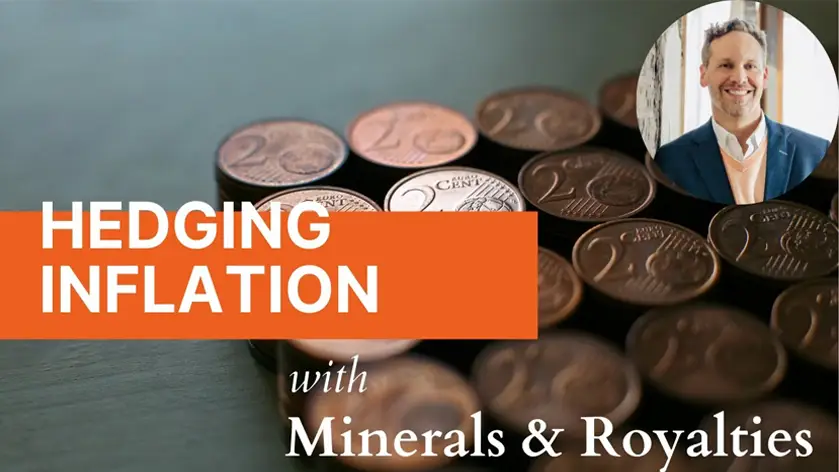Are mineral rights a good investment?
Buying Mineral and Royalty Interests as a Hedge Against Inflation
Many investors have started to think seriously about gobbling up any investment that could act as a hedge against inflation. It is a topic that should be on most minds, investor or not, at this juncture in time because we will likely be dealing with a very extreme bout of inflation over the next 10-20 years.
However, there are a few investments that can be used as a hedge against inflation where their value stays equal or increases faster than the rate of inflation (or the decline of the dollar) and they are:
- Gold and silver (physical, futures, and stock in gold companies)
- Fine art
- Vintage cars
- Real estate
- Oil and natural gas commodities
Of course, there are probably several other good strategies, however we will only focus on the oil and gas industry.
Disclaimer: This is not financial advice, but the investment strategy I’m about to mention is sound and proven; you get to ride the wave of an asset class not known to many investors – buying mineral and royalty interests. It checks several boxes that make for a great investment to hedge against inflation.
How the Price of Oil and Gas Affects Mineral and Royalty Owners
During the time in which an oil and gas Operator is drilling and producing, they are selling that oil at certain price per barrel (bbl) and the gas at a certain price per million cubic feet (mcf).
So, when the price of oil and gas are on the decline, Operators hedge their production by locking in a price to sell it. Conversely, in times when the price of oil and natural gas are on the way up, Operators don’t typically lock in the price to sell their production because they want to sell it at the present higher market rate. If the price is steadily increasing and there is fear of a price crash, they may lock in a price at that point and see what happens. However, when oil and natural gas prices are just starting their run up, Operators will ride the wave, typically increase production, and start producing as many wells as possible hoping to cash in on the higher oil and natural gas prices.
During this time when Operators are selling production at higher rates, the owners of mineral and royalty interests under lands the Operators are producing from will also benefit by seeing higher and higher monthly royalty checks. (This is another reason why it’s good to have a diversified mineral and royalty interest portfolio under good Operators and it’s also important to understand the stages of production.)
High oil and gas prices = High royalty checks for mineral & royalty owners.
Thinking of investing in minerals and royalties? You must first understand three important things.
- Oil and gas is here to stay for the next 10-15-20 years. There’s just a few more good friends alongside them (hint if you’ve been living under a rock it’s renewables)
- Make sure you understand the risks and rewards of Investing 101. If you don’t, you will have unrealistic expectations and low chances of success.
- Ensure you have a reputable industry expert with a solid network so you can reach the real and serious players in the industry.
Like most commodities, oil and gas are heavily tied to supply and demand. We’ve seen the price per barrel of oil start to steadily climb so long as the major global producers keep their production in check and don’t flood the crude oil gates.
Hedge and mutual funds in the energy sector have investments in this asset class and have been reaping the benefits for decades.
They have had within their baskets a vast amount of oil and natural gas operating companies listed on the S&P 500 and New York Stock Exchange.
This asset class is still growing and the intricacies of investing in this specialized area of oil and gas is largely unbeknownst to the common investor.
Truth is, anyone can invest with almost no minimum investment requirements.
Here are the 10 great reasons you should consider when investing in oil and gas minerals and royalties and how to get started:
Reason #1: There are billions of acres available for anyone to invest in.
The US is unique in that it has billions of acres where anyone, individuals, companies, etc. can own minerals and royalties, whereas in other countries the government owns the minerals and individuals are only allowed to purchase the surface rights.
Reason #2: You (and your family) own minerals and royalties forever.
With the exception of overriding royalties (however, these are still a good investment if bought with the right criteria and at a reasonable price), once you own minerals and royalties, they are yours forever until you decide to sell them.
This means your heirs can also inherit them should you decide to pass them down.
Reason #3: They are a source of passive income.
Anyone like mailbox money?
Minerals and royalties can create passive income for 30-40 years and maybe even for a lifetime.
Once you own minerals and royalties and they start producing, you can just sit back and collect and even earn money while you sleep.
If they’re eventually going to be passed down to your heirs, they will receive the royalties too.
Reason #4: Low-cost maintenance compared to other investments.
Unlike other investments in oil and gas, once the purchase of minerals and royalties is complete there are no monthly expenditures required and no further deployment of capital.
Once your minerals and royalties become producing, you’ll have to keep up with lease maintenance, if applicable to you, and make sure you are being paid correctly (that’s what Mineral Managers are for).
Once owned, unlike other investments in real estate (which is exactly what minerals and royalties are), there are no annual taxes owed on minerals and royalties until they become producing.
Reason #5: Low transactional regulations.
The actual buying and selling of minerals and royalties is not heavily regulated like buying and selling other forms of real estate.
Individual investors are not required to have a broker’s license or certifications to engage in the buying and selling of minerals and royalties (although I highly recommend hiring a professional to help).
Reason #6: Diversify, diversify, diversify!
A good diversification model is to own both oil and gas minerals and/or royalties in your portfolio across various areas of the United States.
For example, when looking at opportunities to purchase minerals and royalties, I want to own oil producing minerals and royalties in the Eagle Ford shale, located in Southern Texas, and some natural gas producing minerals and royalties also within the Eagle Ford shale.
Furthermore, I want to apply this same thought process when acquiring minerals and royalties in the Permian basin of west Texas and southeast New Mexico as well as the Haynesville shale in eastern Texas and western Louisiana, and any other producing area of the US.
Reason for this is that the cost to produce and extract oil and gas is different in different areas. So, when the price of oil and/or gas rises and falls, the areas in which it costs more to produce and extract oil and gas will see less development and production therefore sidelining development in those areas.
Reason #7: Invest in strong, prudent operators and companies.
In addition to #7, owning diversified minerals and royalties under technical and prudent operating companies with strong balance sheets creates an even further diversified and stronger portfolio.
The better the company and the better they are at operating your specific minerals, the more they will be worth.
Reason #8: Short-term positive – recoup your investment early.
In the short-term, investing in oil and gas minerals and royalties is a great investment if one can purchase the minerals and royalties right before new wells come online.
This is when you can get most of your investment back as this is the point when production is at its greatest.
Reason #9: Long-term positive – ride the gravy train.
Once you have recouped your initial investment in the short-term, the extra mailbox money you’ll continue to receive is just like owning a ticket on the gravy train express for as long as the well(s) stay producing.
Keep in mind that the well(s) will eventually stop producing but you have the potential to reap significant gains from your investment in the short and the long-term.
Reason #10: 1031 tax deferred exchange.
You can buy and sell minerals and royalties through the usage of a 1031 exchange which must be transacted through a qualified 1031 intermediary thereby creating the ability to defer your property sale tax to a later date.
The only caveat is that the real estate (house, land, or other minerals and/or royalties) you buy must be of equal or greater value. So long as you follow this rule, you could do this over and over again for as many years as you’d like to defer your taxes until the final date in which you decide to sell your assets and not buy any others.
One more tip:
It always helps to look at the opposite side’s perspective. Buyers need sellers so get educated on their point of view, find out what to look for when evaluating prospects, and you will be glad you took the time to understand their concerns when the opportunity to buy presents itself.
There you have it! Investing in oil and natural gas minerals and royalties is not so scary. Minerals and royalties have long been considered a solid investment to help hedge against inflation and now is no different.
Once you understand how the industry works and like all investments, are willing to accept the risks involved, then the process of investing in this enterprising venture can be exciting, rewarding, and something to offer your kids and grandkids for their futures.
How to Buy Mineral Rights
If you’re interested in taking the next steps to investing, here are two things you can do to get started:
1. Talk to a professional Landman or Mineral Manager about your plans. If you know the areas you want to invest in, find one who specializes in those areas of interest (AOI).
2. Read up and get educated on the oil and gas industry. Whether you are a beginner or a seasoned investor, information is always changing and it benefits you greatly to stay abreast of market changes.
We have a number of helpful blogs and infographics to help you get going.
And don’t forget to visit our extensive FAQ page!
If you would like to start really simple and just have a conversation, we invite you to schedule a time to set up a virtual meeting or fill out the form below and we will get in touch with you.





Leave a Comment